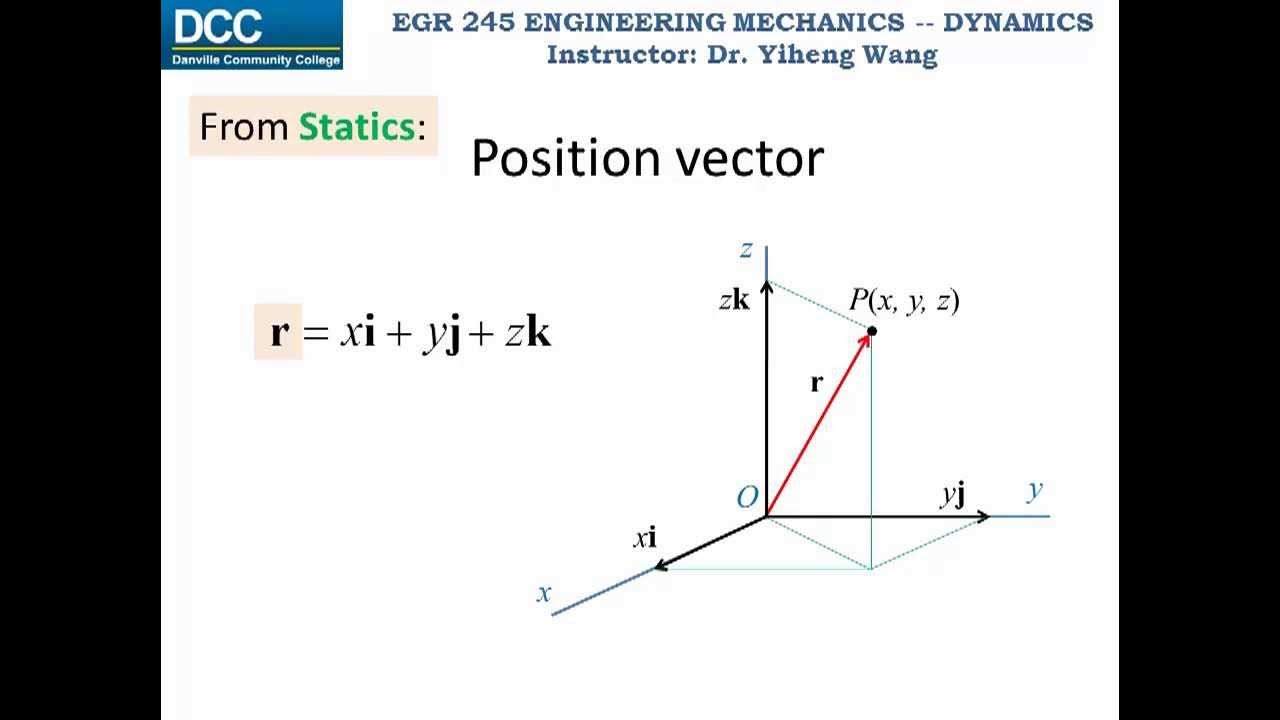Kinematics in 1 dimension part 1
Summary
TLDRThis educational video discusses kinematics, a branch of mechanics that describes motion using concepts like displacement, distance, speed, velocity, and acceleration. The instructor explains the difference between distance and displacement, emphasizing that displacement is a vector quantity involving direction. The video then covers speed as a scalar quantity, contrasting it with velocity, which includes both speed and direction. Acceleration, the rate of change of velocity, is also detailed, including its vector nature and implications. Practical examples, such as calculating displacement and understanding deceleration, are provided to solidify these concepts.
Takeaways
- 📚 Kinematics is a branch of mechanics that describes motion using specific terms like displacement, distance, speed, velocity, and acceleration.
- 📏 Displacement is a vector quantity that measures the shortest path from an object's initial to final position, whereas distance is the total path length traveled, a scalar quantity.
- 🚶♀️ The difference between distance and displacement is crucial; distance sums all path lengths without direction, while displacement considers the direct line from start to end, accounting for direction.
- 📐 The Pythagorean theorem is used to calculate displacement when the path involves right angles, as it helps find the resultant vector from perpendicular components.
- 🚗 Speed is the scalar quantity that measures how fast an object moves, calculated as the distance traveled divided by the time taken, without considering direction.
- ⏱️ Instantaneous speed is the speed at a specific moment, while average speed is the total distance covered divided by the total time taken, averaging all speeds over a period.
- 🚀 Velocity, a vector quantity, adds direction to speed, making it a more comprehensive measure of an object's motion, calculated as displacement over time.
- ⏲️ Acceleration is the rate of change of velocity over time, indicated by changes in speed or direction, and is a vector quantity, represented with a negative sign for deceleration.
- 🛑 Deceleration is a type of acceleration where the velocity of an object decreases, often due to forces like braking, and is represented by a negative acceleration value.
- 🔍 Understanding the difference between uniform motion (constant velocity) and accelerated motion (changing velocity) is key to analyzing real-world physics problems involving motion.
Q & A
What is kinematics?
-Kinematics is the part of mechanics that describes motion using the language of displacement, distance, speed, velocity, and acceleration.
What is the difference between distance and displacement?
-Distance refers to the total path length an object covers during its motion and is a scalar quantity without direction. Displacement, on the other hand, is the straight-line distance from an object's initial to its final position and is a vector quantity that includes direction.
How do you calculate the total displacement when an object moves in different directions?
-To calculate total displacement, you use the Pythagorean theorem if the movements form a right angle. If the directions are the same, you add the distances; if they are opposite, you subtract them.
What is speed and how is it calculated?
-Speed is the rate at which an object covers distance and is calculated as the distance traveled divided by the time of travel. It is a scalar quantity without direction.
How is velocity different from speed?
-Velocity is a vector quantity that includes both speed and direction, while speed is a scalar quantity that only considers how fast an object is moving without regard to direction.
What is acceleration and how is it calculated?
-Acceleration is the rate of change of velocity with respect to time, which can involve changes in speed or direction. It is calculated as the change in velocity divided by the change in time.
What is the difference between average speed and instantaneous speed?
-Average speed is the total distance covered divided by the total time taken, while instantaneous speed is the speed of an object at a specific instant in time.
How can you determine if an object is accelerating or decelerating?
-An object is considered to be accelerating if there is a change in the magnitude of its velocity (speeding up or slowing down) or a change in its direction. Deceleration occurs when the velocity decreases.
In the example of Michael's sports car, what was the acceleration when he stopped in 3.0 seconds from 30 m/s?
-The acceleration was -10 m/s², indicating deceleration since the final velocity was 0 m/s, and the direction of acceleration was opposite to the direction of the car's velocity.
If Albert is riding a scooter at 80 km/h and applies maximum deceleration of 7.50 m/s², will he hit an old woman 45 m away?
-No, Albert will not hit the old woman. He will cover a distance of 32.9 meters before stopping, which is less than the 45 meters distance to the old woman.
An object starts from rest with an acceleration of 10 m/s². How far does it go in 0.5 seconds, and what is its velocity after 0.5 seconds?
-The object will travel 1.25 meters in 0.5 seconds, and its velocity after 0.5 seconds will be 5 m/s.
Outlines

此内容仅限付费用户访问。 请升级后访问。
立即升级Mindmap

此内容仅限付费用户访问。 请升级后访问。
立即升级Keywords

此内容仅限付费用户访问。 请升级后访问。
立即升级Highlights

此内容仅限付费用户访问。 请升级后访问。
立即升级Transcripts

此内容仅限付费用户访问。 请升级后访问。
立即升级浏览更多相关视频

Kinematics Part 1 (Usapang Distance,Displacement,Speed atbp!) Physics Explained In Tagalog/Filipino

Dynamics Lecture 02: Particle kinematics, Rectilinear continuous motion part 1

MATERI KINEMATIK kelas 11 bag 1 PENGERTIAN GERAK, JARAK & PERPINDAHAN K Merdeka

Gerak Benda dan Makhluk Hidup di Lingkungan Sekitar

IGCSE Physics [Syllabus 1.2] Motion

BAB 4 : GERAK DAN GAYA | Part 1 : GERAK BENDA | IPA SMP Kelas 7 Kurikulum Merdeka
5.0 / 5 (0 votes)
